|
Air-India International London-Bombay First Return Flight (Cairo-Bombay stage) on 12 June 1948 About 65,000 postal articles are believed to have been carried on the first Bombay-Cairo-Geneva-London service of Air-India International which left Bombay on 8 June 1948. Just a few examples of mail carried on the London-Bombay and Geneva-Bombay return leg are known. My own estimate is less than 100 covers from London (largely comprised of Jal Cooper prepared covers and red Air-India International souvenir covers) and less than 50 from Geneva (largely registered mail covers) were carried on the return flight. Less than 50 unregistered mail is thought to have been left behind at Geneva and travelled by the second service a week later. However, I have yet to come across a single example of a cover which was carried on the first return flight from Cairo with a high degree of certainty. After more than 15 years of searching, I have come across this cover which I believe is the first or second recorded piece, depending on how much you agree with the other example mentioned at the end of this article. Since there is no Indian postal cancellation or delivery mark after return to India, I cannot declare this to be as such unless I open this to scrutiny and debate with other collectors. The purpose of this article therefore is to seek feedback and comments from other collectors. Please also share images of covers you have that you believe to have made it on the return flight from Cairo with me. Examples of London-Bombay and Geneva-Bombay as well as images of the other cover suspected to have flown Cairo-Bombay on 12 https://www.indianairmails.com/return-flight-covers.html or by scanning this QR code. Why do I think this one is any different from other mail sent to Cairo on the 8 June flight.
Fig.7 I welcome feedback, comments and images other collectors want to share with me on this topic. Please write to me at [email protected].
0 Comments
An Air-India beer coaster sent by post from Nairobi Much has been written about the airline's innovative beer coasters. Creative and humorous design was incorporated in their beer coasters used for in-flight drinks service. Right from the late 1950s onwards, the airline came up with over 300 different designs. Passengers loved them so much that they often took them home with them, and Air India beer coasters have become a collectible item in their own right. (Click here for images of other beer coasters of Air-India)
Here we have something I have never seen before. This passenger took a liking to a beer coaster and used it much as we would use picture postcards in those days. He affixed a postage stamp and an airmail label on it and posted it in Nairobi to an addressed it to Germany with a message in German which roughly translates to ‘We will see each other again on 31 July 1962’. A set of airmail stamps issued in Switzerland valid for one day only. I keep popularising the Air-India International 12a stamp issued for use on 8 June 1948 as something unique in world postal history. One of the upsides of doing this is that I get to hear of other similar stories from other countries. I had posted one about a Suriname stamp in my blog on 3 July 2023. More recently, Bob Medland sent me this article he and Charles Lablonde wrote about a Swiss set of airmail stamps with very interesting attributes as well. Bob is secretary of the Postage Due Mail Study Group (PDMSG) and an ardent collector of Swiss mail. He was also kind enough to grant permission for me to reproduce his article on our blog. Click here to read and enjoy the full article.
(Courtesy: Bob Medland) Postage stamp issued to celebrate the first KLM flight from Paramaribo and Amsterdam. It is well known that the postal authorities of India had issued a special stamp for the Air-India Bombay-London flight on 8 June 1948. All the more, they decided that this would be printed in limited quantities, and be valid only for use on the day of the flight, and that too, only on mail to be flown on that flight. So far we thought that this was a unique event in world philately, and never repeated since. 'We were wrong! A keen philatelist pointed out to us that one other country, Suriname, had issued a postage stamp on 23 May 1949 to celebrate the first flight from Paramaribo and Amsterdam by KLM. Just like the Air-India International issue, this stamp was also valid for use on this flight only. An interesting stamp with value 27½¢ Women of Netherlands was issued May 10, 1949, for the KLM (Royal Dutch Airlines) inaugural DC-6 flight from Paramaribo to Amsterdam and the stamp was only valid on mail carried on that May 23, 1949, flight. Suriname is located on the northern coast of South America and is a former Dutch colony. One of the smallest countries in South America, its population is one of the most ethnically diverse in the region. Suriname's economy is dependent on its extensive supply of natural resources, most notably bauxite, of which it is one of the top producers in the world. The southern four-fifths of the country is almost entirely covered with pristine tropical rainforest. It has a population of approximately 612,985. Most of the people live by the country's (north) coast, in and around its capital and largest city, Paramaribo. the some of the postaly used examples of the Suriname stamp are displayed below, First Flight cover with the 27½ c stamp used on 23 May 1949 with the first flight cachet in violet. Return post card with both halves intact used on the Amsterdam-Paramaribo stage on 20 May 1949 and the return stage on 23 May 1949.
The first Mini to fly 5,500 miles on Air-India International in 1959 Jordi Batlle Suñé is an aviation enthusiast based in Barcelona, and is just as passionate about Morris Mini Minors. He visited our website while researching information on a blog post combining his twin passions. He contacted us seeking information on the London-Calcutta Air-India International flight. Upon receiving his email, we provided him a scanned copy of the September 1959 timetable. About Jordi Batlle, He is an IT professional who works in the aviation industry. He really love aviation and Mini, and started a blog to talk about these two topics. Please feel free to connect with him on LinkedIn if you want to discuss aviation or the automotive industry. Now with all his research completed, he has published well-narrated story as a blog post - 'The First Flight of a Mini and has given us permission to reproduce the same on our website, Here is the complete version of the article. Please read and enjoy. THE FIRST FLIGHT OF A MINI by Jordi Batlle Although for me, all articles are special, today's is a little more. A few months ago, my friend and fellow fighter at TheComminity Fernando gave me a photo. In it, a Mini Mk1 could be seen entering what looked like an airplane hold. It should be noted that when Fernando gives away photos, they have a high probability of having something special. In addition, they will always be original vintage photographs, they will never be reprints. In this case, it is enough to turn the graphic document over to see that it is the original photograph that was sent to the press in September 1959 reporting the following: A Morris Mini-Minor being loaded into an Air-India International aircraft at London Airport after a request had been received from Hindustan Motors Ltd., for one to be sent as soon as possible. Space was reserved in the first available aircraft, which was scheduled to arrive in Calcutta within 60 hours of leaving London, and the new BMW model made its first flight. As you can see, valuable information can be extracted at the bottom of the small newspaper clipping:
Tata airlines Air India has not always been the trade name of the country's airline. In its beginnings, back in 1932, Jehangir Ratanji Dadabhoy Tata, known as JRD Tata, founded Tata Airlines. The businessman, a member of the Tata family, also founded other companies such as Tata Motors or TCS (Tata Consultancy Services). It is not until after the independence of India when the country's government enters the shareholding with 49% of the shares, including a 2% purchase clause that it needed to command the company. Clause that they would execute at the first exchange to control the airline. By then the name was changed and it was called Air India , a name that it still retains today. Air India – International flights The first international flight of the flag company was a Bombay – London, which it covered with a Lockheed Constellation L-749A making stops in Cairo and Geneva. The first Constellation that Air India had, called the Malabar Princess and with the registration VT-CQP, ended up in an accident at Montblanc in 1950. Already in 1954 they began to receive their first Super Constellations, and this is where our story begins to get interesting, because it was not until 1960 that Air India entered the so-called Jet Era, so we now know which model of plane transported the first mini to india We continue to investigate. Searching the internet I saw that the Super Constellation had some variants, which included or not the side loading door. Obviously the device I was looking for was one of those with the side opening, so I kept looking. I wanted to pull the thread a little further along that line and got in touch with probably the group of people who know the most about Air India today. The Air India Collector website , led by Piyush Khaitan and Dharmdev Maurya, is perhaps the corner of the internet with the most information about Air India, but also about the history of aviation in that country. They guided me with times and frequencies of the London-Calcutta service at that time, to discover that the flight had to leave London on September 9, 1959, with the Mini well loaded in its hold. The flight number was AI104 and it would arrive in Calcutta the next day, and not at 60 hours as the newspaper said. As a curiosity, flight AI104 today connects the airports of Washington and Delhi. Unfortunately it is not related to London. We already know what plane and even the flight number we need to know who it was for and why so much haste. The only thing we know is that it was a request from Hindustan Motors, so yours will be to know the car company first. Who was that Mini for? Hindustan Motors Ltd, founded in 1942 by BM Birla with the collaboration of William Morris, very soon began to manufacture its own versions of English models, such as the Hindustan 10 (inspired by the Morris Ten). It was said that, as with Enzo Ferrari and Sir Alec Issigonis , there was a very good harmony between BM Birla and William Morris, so it is not surprising that the business relationship also flowed between the two companies. It is not until 1957 when Hindustan hits the mark and begins to manufacture and sell the most famous car in Indian history: The Ambassador. Built on the basis of the Morris Oxford III, the Ambassador has been in production until 2014, when production stopped after 57 years. As you can see, the relationship between the two companies (and their leaders) led to writing a page in motorsport history, but let me go back to Mr. Birla. BM Birla, in addition to being an entrepreneur, supported the creation of numerous institutions in India, such as the Birla Institute of Technology, the BM Birla Science Museum, or the BM Birla Planetarium, as well as numerous schools. Hindustan Motors Ltd itself placed an order for 8 Minis to market in India, which were shipped by ship in 1959, arriving in India in December via Lisbon. Among them, this beautiful Mini that is still preserved in Goa. But of course, these Mini were sent at the same time as the unit that concerns us today, but our protagonist left by plane, with a brutal increase in costs. That car could not be for sale. My theory is that this Mini was a personal shipment from William Morris for BM Birla. A gift as a token of gratitude for a fruitful business relationship. Great business minds never stop working though, so the secondary motive was to try to explore the possibility of making Minis in factories in Hindustan. Which, seen what has been seen, was not carried out. The first flight of a Mini was on September 9, 1959, and I'm sure no one imagined that 64 years later we would still be talking about that AI104 bound for Calcutta. Today, a member of the Birla family has a large collection of cars. This is Kumar Mangalam Birla. Who knows if he will have the little Mini in his possession... This week's story ends here. I hope you liked knowing some details of this very special flight. This post is perhaps the perfect fusion between the two main topics of the blog: Aviation and Mini coexist in a surprising way in this space, although today is probably the golden opportunity for you to delve into one of the topics, if you are a fan. of the other. I would also like to encourage you to subscribe to the newsletter, where you will receive all my new posts promptly every Saturday. You just have to enter your information in the form below. Click here to visit his blog post
(We are grateful to Jordi Balle for allowing us to reproduce the above blog post on our website) A marriage made in the heavens …. literally! The bridal couple, Sunita & Dilip Popley being welcomed at Mumbai airport by Uttara Parikh of Air India. Air India always did things differently, and has many firsts to its credit, particularly for customer delight and here is one more example. When Laxman Popley of Mumbai, owner of Popley & Sons, Jewelers wanted to celebrate his son Dilip’s wedding with Sunita in October 1994, he approached the airline for something different, and the airline replied that for him, The Sky is the Limit! This is what made the airline truly unique.
Air-India dedicated 3 decorated check-in counters at Mumbai Airport for all the Hawai Bandhan flight guests. The entire event was called ‘Hawai Bandhan’ (Wedding in the Air). A special design was created for this entire ceremony and tickets were given to guests in a folder specially designed for this. This folder said, ‘Air India proudly welcomes you to a historic wedding in the air, A marriage that’s truly made in heaven. We hope you enjoy the world’s first airborne wedding’. The same design was repeated on to the boarding cards and other collateral. The Managing Director of Air-India, Capt. D.S. Mathur with Bride and Groom Boarding was at 12.30 pm and take off was at 1.00 pm. Eight rows of seats were removed from the aircraft for the priest to perform the wedding ceremony and for the bridal couple. The bridal couple came to the airport in all their wedding finery and checked in at the beautifully decorated check in counter. Uttara Parikh, who was the main organizer on part of the airline, was there to greet them and was also on the flight. The Managing Director of Air India, Capt. D.S. Mathur who also happened to be at the airport greeted the couple as well. Rose water was sprinkled on the guests as they boarded the aircraft, and a rose bud was presented to each of them. Shehnai music which is traditionally performed in Indian weddings was playing on the music system inside the aircraft as were other traditional wedding songs. The priest started performing the wedding ceremony once the aircraft took off. The ceremony itself was performed in full including recitation of traditional shlokas (hymns). The only part that was not possible was the lighting of the holy fire, which was not permitted for safety reasons. These tent cards were placed in each meal tray on the flight. While the ceremony was going on, guests were served with refreshments. The airline pulled out all the sops where it came to catering. Master Chef, Sanjeev Kapoor was roped in to curate the meal and he also prepared the three-tier wedding cake. The meals were served on Royal Doulton crockery. Each tray had a little menu card with the same Hawai Bandhan motif. The food served on board was catered by Air India in full compliance with their requirements of loading meals on board to fit in the trolleys. A gift was also given by Air India to all the guests at the wedding. Air India also gifted the newly married couple tickets to Switzerland for their honeymoon. This was the first time a wedding ceremony was performed in the air, and was not repeated anywhere for many years by any other airline. On a lighter note, I would love to see what their wedding certificate says about the place of marriage. Here is a link to a 2 minute video about the wedding https://reuters.screenocean.com/record/1016526 We are grateful to Uttara Parikh, our source of never ending knowledge on everything about Air India, for sharing this wonderful story with us and to permit us to use the images. She was the coordinator from Air India for this event. The first ‘real’ pilot of Tata Airlines We all know about how the house of Tatas forayed into civil aviation in 1932 as the Aviation Division of Tata Sons Ltd. Much has been written about two of the three pilots involved in the first flight between Karachi and Madras and back, between 15-18 October 1932.
He then joined Tata in 1932 flying mail for them between Karachi and Madras. During the eight years he was with Tata, he not only flew as part of the 15 October 1932 first flight, but also both the special flights with Christmas mail and the Colombo extension on 23 & 24 December 1936. Later when the Empire Air Mail Scheme was introduced, Bharucha again had the honor of flying the first extension flight from Karachi to Colombo on 27 February 1938. Left: Homi with a Chinese pilot during World War II. Right: (L to R) Sir Phiroze Sethna, Homi Bharucha, a postal official, Thelma and J.R.D. Tata, C.M. Eastly, Nusserwanji Guzder and Lady Sorab Saklatvala. Mail flown by Homi D. Bharucha on first flights of Tata Air services. Left: Bombay to Karachi on 18 October 1932; Right: Madras to Colombo on 23 December 1936 (pilot signed cover) He joined the Maharaja of Jaipur in 1940 looking after his fleet of aircraft and aerodrome. He was then lent to the R.I.A.F. between 1942-1945 as a pilot, a Flt. Lieutenant, flying critical missions ‘over the hump’ in the Eastern Himalayas. He flew over 1,000 hours and was decorated with the AFC and DFC. After the war, when India took over the Air Force, he was promoted to Wing Commander. Having taken very ill, he sadly passed away in 1948, just 40 years of age. His final resting place is at the Brockwood Cemetery and there is a beautiful plaque in his memory installed by his son Cyrus and daughter Gita in August 2022. Sir, we salute you! His children, Gita & Cyrus at his resting place in Brockwood Cemetery in August 2022
Read his very well reseached paper on the 1931 England - Australia Experimental flights.
To better understand the historical aspects he has spent an extensive time researching his subject in the National Archives at Kew, The India Office's Oriental Room in the National Library at St. Pancras, and the British Postal Section at Mt Pleasant. Accuracy has been the aim. An active member of the numerous Societies, he has held the posts of President, Secretary, Editor and Treasurer at the most of them from time to time. Currently he is the Chairman of the NSW Philatelic Deveopment Council and an accredited National Judge. His writings has been mostly in local philatelic Societies, this being the firsr major effort. Ed has published a book, The Flight of the Old Carthusian in 2012. The book is part of an anticipated series to be known as "The Air Road to Australia" which will trace the development of the route from its inception using authentic documentation to tell the story. Ed has also written a detailed account of the two Experimental Flights in 1931 between England and Australia. This account is in four parts, and these flights are of great significance to Aerophilatelists and Postal History collectors in India. He has graciously premitted us to post these stories on our website, which you can access by using the links below. 1931 First Experimental Flight 1931 Second Experimental Flight
(Article Courtesy: Mr. Ed Wolf)
A wonderful event was organized at the Air India Building, Nariman Point, Mumbai on 27 November 2021. They had organized an exhibition of some of the art and artefacts from their fabulous collection in the ground and first floor of the building. Also on display were many examples of the great work done by the art studio and the publicity department of the airline. They had invited the Minister of Civil Aviation, and the CMD of Air India and other top brass was present along with eminent citizens of the art world and of Mumbai. Click here to see event details The exhibition was curated by Dr. Meera Dass and the redoubtable Uttara Perekh was as usual the fountain of knowledge and anecdotes on the history of so many objects and creations. Vivek Matthai and I were happy to be invited and thoroughly enjoyed the evening. After an hour of enjoying the collection, the gathering moved to the wonderful open terrace and garden on the podium level where we were treated to a grand laser show on the façade of the massive building which was beamed live on a giant screen as it was being filmed by a drone.
The art collection with remain with the Government owned entity and survive sale of the airline to the Tatas. We all hope that the collection gets a dedicated museum to display and do justice to what is certainly the greatest corporate art collection in India, and perhaps the world.
(Disclaimer: 16 October 2021. We are grateful to Mr. Kamlesh Sharma for writing this piece, and Mr. Cyrus Guzder for sending it to us, and obtaining permission to post. We have always attempted to be accurate and factual in all information on our websites and readers are invited to point out inaccuracies and mistakes for which we will be thankful. We also wish to add that the story is interesting but unsubstantiated. There are other theories as well on the origin of the Maharajah and we will publish those as we get permission to do so. We crave indulgence from our readers to enjoy this story or simply a good yarn in case it turns out to be inaccurate) Hardly anybody knows that the Maharaja’s famous moustache was modelled by Bobby Kooka after his good friend Syed Wajid Ali, Wajid Sahib was quite a flamboyant, larger than life personality in demeanour and lifestyle.
This is the delightful story of one of India’s first marketing wizards, a maverick of the Tata Group, a close associate and friend of JRD Tata; Bobby Kooka, the man behind the Air-India Maharajah. Bobby Kooka joined the aviation department of the Tata Group in 1938, the same year in which the fledgling Tata Airlines, India’s first commercial airline service, began to fly. Many years later, JRD Tata would fondly narrate the tale of how he first met the man. “I don't know how many of you there are here tonight who were in Tata Airlines in May 1938 -probably not many- when Mr. Kooka first burst upon an astonished air transport world which has never been the same since. On that fateful day in May, Mr. Kooka appeared in my office and, having pointed out the deficiencies in the Tata Organisation, explained how badly needed he was in Tatas to put them right … I decided that if there was any place for him in Tatas, it could only be in Tata Airlines. Furthermore, in those days, the chances of survival of Tata Airlines were pretty dim and so it was clear that by employing him there we would be taking little risk of making any permanent commitment.” After spending a few years as Secretary of Tata Airlines, Bobby Kooka decided to give the brand now re-christened Air India, with JRD as Chairman - a Human Face, that represented India with charm and dignity. At the first booking office of the Company, located in Churchgate in Mumbai, he created “an oriental potentate, sitting on a magic carpet, smoking a bubble hookah.” This was the beginning of the Air India Maharajah, perhaps India’s first advertising mascot who went on to win millions of hearts across the world. Here is how Bobby Kooka described the Maharajah. “We call him a Maharajah for want of a better description. But his blood isn’t blue. He might look like royalty, but he isn’t royal.” Working together with Umesh Rao of J. Walter Thomson, the advertising agency, they created this loveable symbol of India – a round face, an outsized moustache, striped turban and long, sharp nose. After making his first appearance in 1946, the Maharajah was soon all over the world, and in the process, he made *Air India* one of the *most visible and engaging brands globally*. Fifty years before Google even thought of its frequent Google-doodles, Bobby Kooka was constantly reinventing the Maharajah to suit topical themes - as a lover boy in Paris, a sumo wrestler in Tokyo, a Romeo in Rome, and a guru of transcendental meditation in Rishikesh. *The Maharajah was funny, irreverent*, up to antics, *but always full of India,* his proud homeland. He was a friend to every traveller on India’s national airline, reaching out with warmth and hospitality. Bobby Kooka also took forward this “Indianness” to every office of the airline, worldwide. Indian imagery, dance, paintings and sculpture appeared in the offices of Air India in New York, Geneva, London and elsewhere, making *the airline a beautiful showcase of the country’s great heritage*. This, in turn, attracted many global travellers to make this the airline of their choice. The filmmaker Muzaffar Ali, who worked in Bobby Kooka’s marketing team for many years, says – “For eleven years, I was on a flight, dreaming through the eyes of Kooka and his mentor JRD. I was not working for Air India, but for India.” But if Kooka was a *marketing genius*, he was also a maverick, who created storms in many tea-cups, in his time. He used to write for the Tata House magazine of the time, editing the last page called the “Tata Patter”*, under various pen names ranging from Pestonjee Pepper to Umslopogas, Chief of the Amazulus. On this page, he proceeded to, in the words of JRD Tata, “play havoc with the whole Tata organization by demolishing the ego and assassinating the character of every Tata Director and Official. Through Air India hoardings, he *demolished and punctured innumerable egos*, which placed JRD at the receiving end of endless complaints from MPs and Ministers, including Morarji Desai and Krishna Menon, who were depicted in red pants running a track race with Mr. Kripalani.” But nonetheless, JRD Tata provided Bobby Kooka with the required support throughout his career, because he recognized Kooka’s genius, and perhaps also the need for some benign humour in the midst of our daily challenges. As JRD said at Bobby Kooka’s retirement function in 1971 – “May you never cease tilting at windmills, at the pretentious, the charlatans, and the hypocrites of the world.” He also said - “I forgive him all the apologies I had to tender on his behalf. I forgive him all the scars that I have borne because of the pleasure, the laughter and the relief from frustration and boredom that he provided to thousands, and perhaps millions, of people.” This reminds me of one of JRD Tata’s key secrets to his success, of which he says – “If I have any merit, it is getting on with individuals according to their ways and characteristics …to be a leader, you have to lead human beings with affection.” JRD led the maverick Bobby Kooka with that same human affection, and, in turn, Kooka led the fabulously successful marketing and publicity efforts for the nation’s flagship airline, including the creation and nurturing of the wonderful, timeless "Air India Maharajah". |
Here I will update you on interesting information about Archives
July 2024
Categories
All
|








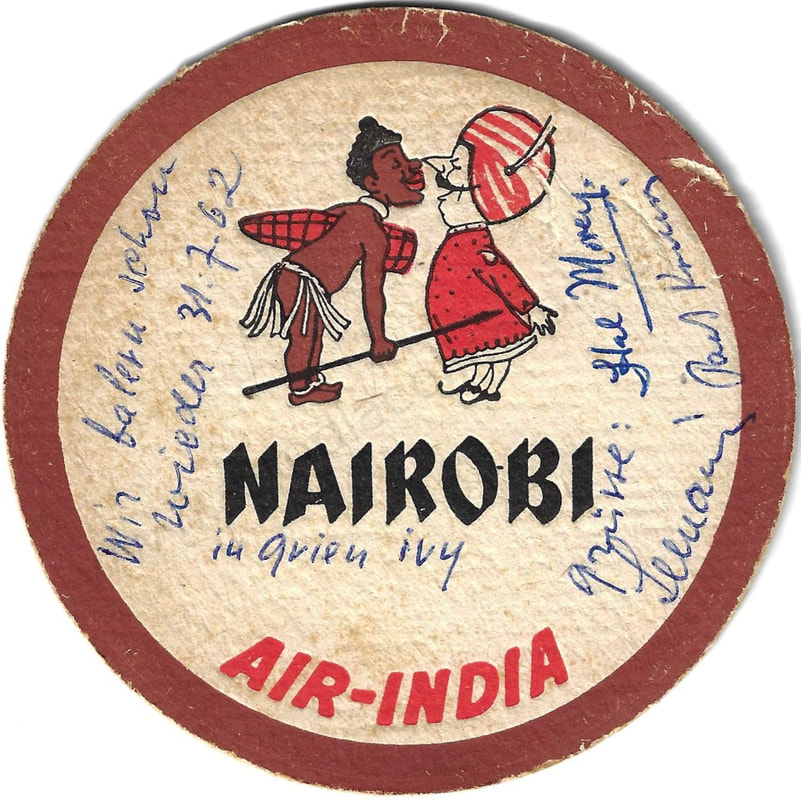


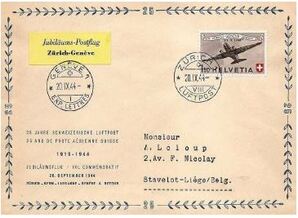

















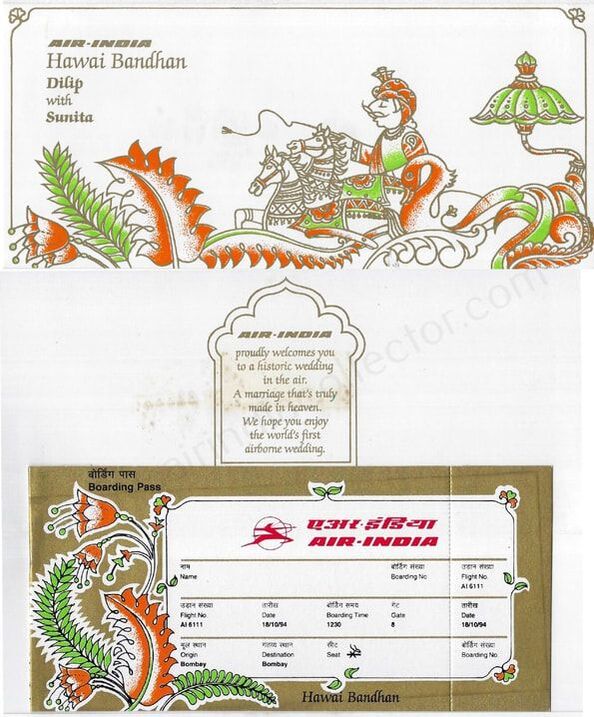














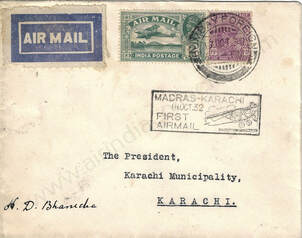
























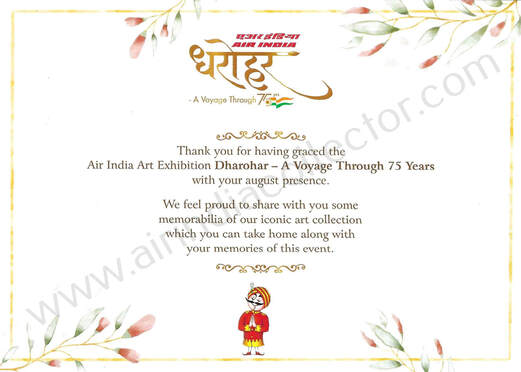




 RSS Feed
RSS Feed